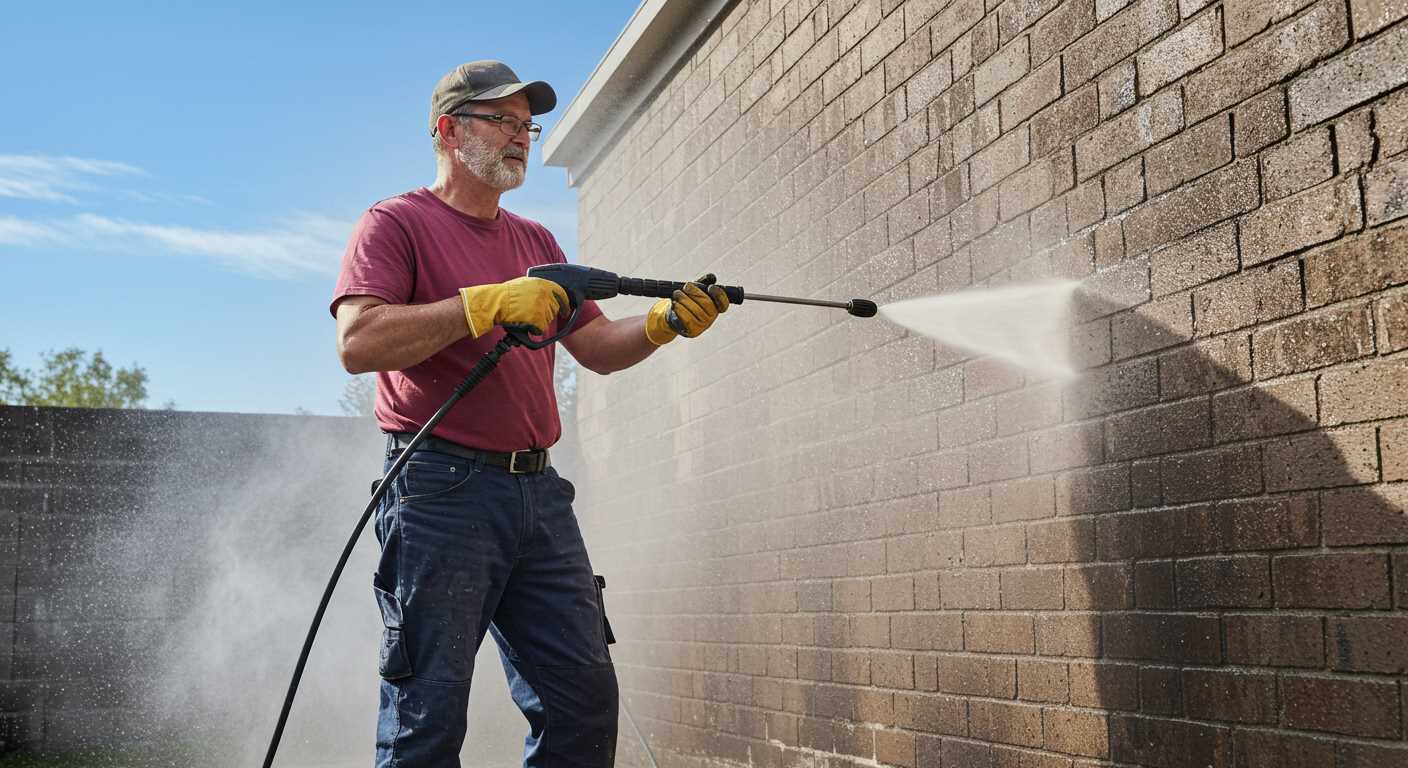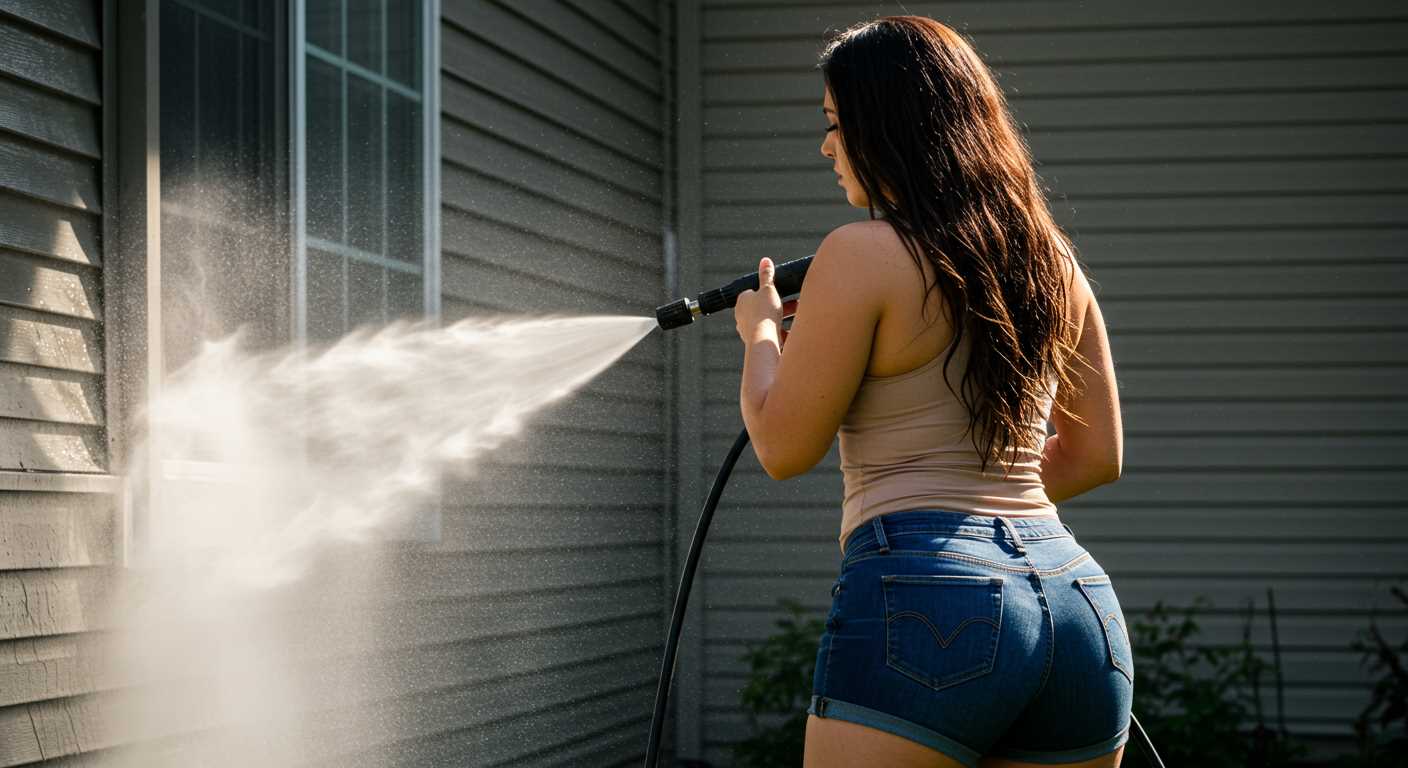



Choosing models with quieter motor technologies, such as induction motors, can significantly help achieve a less disruptive cleaning experience. These motors operate smoothly, reducing vibrations and, consequently, the overall sound emitted during use.
Utilising sound-dampening materials is another practical method. Placing the unit on soft surfaces or using anti-vibration mats can absorb some of the noise produced and limit the sound’s reflection off hard surfaces. Additionally, fabric covers designed for machines can help buffer sound without compromising accessibility.
Operating your equipment at a reasonable distance from living spaces is another smart strategy to mitigate sound impact. Maintaining a sufficient distance can make the operation less intrusive for both you and your neighbours. Consider placing the equipment in a detached garage or a designated cleaning area.
Regular maintenance is key to ensuring the machinery functions optimally and quietly. Inspecting and replacing worn-out components, such as bearings and seals, can prevent excessive noise generated from mechanical friction. Keeping hoses and connections clean and free from debris also assists in maintaining smooth operation.
Implementing these strategies will undoubtedly enhance your cleaning sessions, making them more pleasant and less bothersome for you and those around. By prioritising quietness alongside efficiency, you can enjoy your cleaning tasks without unnecessary disturbances.
Strategies for Minimising Equipment Sound Levels
Utilising acoustic barriers is one of the most effective ways to dampen equipment sound. Constructing a soundproof enclosure around the unit can significantly diminish noise emissions. Use materials like foam or sound-absorbing panels for optimal results.
Regular maintenance plays a critical role in managing volume. Ensure all components, such as hoses and fittings, are in good condition. Worn or damaged parts can lead to increased vibrations and additional decibels.
Engine and motor modifications can also help achieve a quieter operation. Opt for units featuring quieter engines or invest in vibration dampening mounts. These modifications minimize excess noise caused by engine vibrations.
Time of operation can greatly impact overall noise perception. Schedule tasks during daylight hours when environmental sounds can help mask the sound of your machinery. This creates a more harmonious working atmosphere and is less disruptive to the nearby surroundings.
Finally, employing smaller, low-noise-rated models for light-duty tasks can be a smart choice. These models are designed to operate at reduced sound levels, making them ideal for residential areas or noise-sensitive environments.
Choose a Quieter Model

Selecting a model with a lower decibel rating significantly impacts sound levels. Look for electric machines instead of gas-powered ones; they typically generate less sound. Certain brands specifically market low-noise variations, which can be incredibly beneficial. Investing in these options is wise for both your comfort and that of your neighbours.
Check for Noise-Reduction Features
Some designs incorporate advanced noise-dampening technology. Features like insulated housing, quieter motors, and inline muffle systems effectively lessen operational clatter. Prioritising these attributes will enhance your cleaning experience while minimising disturbances.
Categorise by Intended Use
Consider how often and where you’ll employ the equipment. If usage is frequent in residential areas, opt for lighter-duty models that balance performance and sound. This approach keeps functionality high without compromising the tranquillity necessary in a neighbourhood setting.
Use Noise Reduction Accessories

Investing in noise-cancellation attachments significantly modifies the acoustic footprint of your equipment. A common choice is a sound-dampening muffler, which effectively absorbs and reduces engine sound. Look for models specifically designed for your machine to ensure proper fit and maximised efficacy.
Vibration Dampening Pads
Incorporate vibration dampening pads under your unit to further minimise sound disruption. These pads absorb vibrations during operation, preventing the ground from transmitting sound waves. This simple addition can lower the volume perceived in your surroundings.
Sound Insulation Covers
Consider using sound insulation covers. They are designed to envelop the engine and housing, significantly cutting down on unwanted auditory emissions. Ensure that the material used is heat-resistant and breathable to avoid overheating during use.
Utilising these accessories will lead to a more pleasant experience for both you and your neighbours, enhancing usage sustainability while maintaining productivity.
Opt for Electric Over Gasoline Pressure Washers
Choosing an electric model provides a quieter experience compared to gasoline counterparts. Electric machines typically operate at a decibel level of around 75 dB, while gasoline engines can exceed 90 dB. This reduction in sound can significantly enhance comfort during use.
Another advantage is the overall design; electric models are generally lighter and more compact. This makes them easier to manoeuvre and store, which can alleviate the hassle often associated with larger gas-powered units. Less vibration is also a factor, contributing to a more pleasant operating environment.
Maintenance is simpler with electric variants. They don’t require oil changes or fuel mixing, which can generate extra sound during operation. Just plug in, and you’re ready to go. This aspect leads to a quieter setup, absent of starting and stopping noises frequently associated with gas engines.
For residential use, the convenience of an electric unit is unmatched. They typically feature sufficient power for common cleaning tasks such as patios, vehicles, and garden furniture. Their sound levels make it feasible to operate in populated areas without disturbing neighbours.
Selecting electric pressure cleaners not only benefits your ears but also the environment. They produce zero emissions during use, making them a more sustainable choice. This aligns well with a growing consciousness towards greener alternatives in everyday tools.
In my experience testing multiple brands, I found that reputable electric models often include advanced technologies for sound dampening, further minimising operational volume. Brands dedicated to reducing their environmental footprint often implement these features, thus providing an extra edge in performance without the racket.
In summary, if you’re looking for a more tranquil experience while tackling cleaning tasks, electric versions stand out as the optimal choice, providing ample power and noise reduction.
Maintain Your Pressure Washer Regularly
Regular upkeep of your cleaning device is essential for optimal functioning and minimising sound output. Start with cleaning or replacing the filters often; dirt buildup can create additional strain, resulting in increased decibel levels. Make it a habit to inspect and clean the nozzle after each use. Clogged nozzles force the motor to work harder, amplifying operational noise.
Check Connections and Hoses
Frequent inspections of hoses and connections prevent air leaks, which lead to inefficient performance and elevated sound levels. Ensure that all joints are tightly secured and check for damages. Replace any worn-out hoses immediately to maintain a quieter operation.
Lubricate Moving Parts

Apply appropriate lubricants to moving parts to reduce friction and noise caused by wear. The axle, motor bearings, and any points of motion should be regularly treated to ensure smooth functioning. Using the right lubricant not only correlates with reduced noise but also extends the lifespan of the equipment.
Set Up a Sound Barrier During Use
To effectively minimise disturbances while operating, construct a sound barrier around the equipment. This can significantly perturb the sound waves emitted and protect the surrounding environment.
Here are a few practical methods:
| Method | Description |
|---|---|
| Use Acoustic Panels | Install sound-absorbing panels on nearby fences or walls. These panels can drastically lower decibel levels by absorbing sound waves. |
| Build a Temporary Barrier | Erect a barrier using heavy tarps or plywood sheets to encircle the unit. Ensure it is at least 1.5 metres away from the device for optimal effect. |
| Strategic Placement | Position the machine close to structures like buildings or walls that can reflect sound away from inhabited spaces. |
| Plant Vegetation | Adding trees or shrubs around the working area can help absorb sound, acting as a natural buffer. |
Regularly assessing the barrier setup is vital. Adjustments may be necessary to achieve the best sound dampening. By implementing these strategies, the acoustic footprint during use lessens, creating a more serene environment for both the operator and neighbours.
Utilise Vibration Dampening Techniques
To minimise sound from your cleaning device, implementing vibration dampening techniques is a powerful strategy. First, consider using rubber padding or mats under the device. This simple addition significantly absorbs vibrations, leading to lower sound levels during operation.
You can also mount the machinery on a vibration isolation platform. This setup effectively decouples the motor and body from the ground, thus reducing transmitted vibrations and resulting in a quieter experience.
Another effective technique is to ensure all screws and bolts are properly tightened. Loose components can amplify vibrations, which in turn produces excessive sound. Regularly checking and maintaining connections can help mitigate unnecessary noise.
Adding mass to the unit’s frame can further help dull vibrations. Use dense materials like lead or heavy rubber in strategic locations to dampen the overall sound output. This extra weight will absorb vibrations from the motor and pump, leading to a more serene operation.
Finally, isolating the motor from the rest of the equipment with specifically designed mounts can greatly diminish the sound produced. These mounts are engineered to absorb shocks and vibrations, transforming your cleaning tasks into a quieter affair.
Adjust the Water Pressure Settings

Setting the correct water level can significantly impact sound levels. Lower settings produce less intensity, thus minimizing disturbances. Follow these steps for optimal adjustment:
- Identify the ideal setting for your surface. Softer materials like wood usually require less force.
- Gradually decrease the intensity while testing the performance on a small area.
- Monitor the results. If the surface is clean without excessive force, maintain this lower setting.
In addition to the direct reduction in volume, adjusting these levels can prolong the equipment’s longevity, as it minimizes wear and tear associated with high-intensity use.
Utilise the adjustable nozzle feature, if available. A wider spray angle can allow for effective cleaning at lower power, which further contributes to a quieter operation.
- Choose a nozzle that disperses water over a larger area.
- Perform regular tests on various surfaces to find the most effective combination.
Being mindful of these settings not only supports a calmer environment but also enhances overall cleaning efficiency. It’s a practical step toward quieter and smoother operation.
Employ a Noise-Cancelling Headset
Using a noise-cancelling headset during operation can significantly enhance your experience while engaging with loud cleaning machinery. This not only protects your hearing but also allows you to concentrate on the task at hand without distractions. Here are some key points to consider:
Types of Headsets
- Over-ear models: These provide excellent passive isolation and are often equipped with active noise cancellation technology, making them ideal for blocking out surrounding sounds.
- In-ear options: These are portable and can offer good noise isolation, though they may not perform as well as over-ear styles in louder environments.
Features to Look For
- Active Noise Cancellation (ANC): This feature neutralises ambient sounds, allowing you to work in quieter surroundings.
- Comfort fit: Look for adjustable headbands or cushioned ear pads to ensure comfort during extended use.
- Long battery life: Opt for models that offer extended playtime on a single charge for uninterrupted use.
- Built-in microphone: For clear communication, consider headsets with high-quality mics, especially if you need to take calls while operating machinery.
Integrating a quality headset into your cleaning routine not only protects your ears but also enhances focus and productivity. Make an informed choice based on the tasks you’ll be undertaking and enjoy a more pleasant experience while working with noisy equipment.









